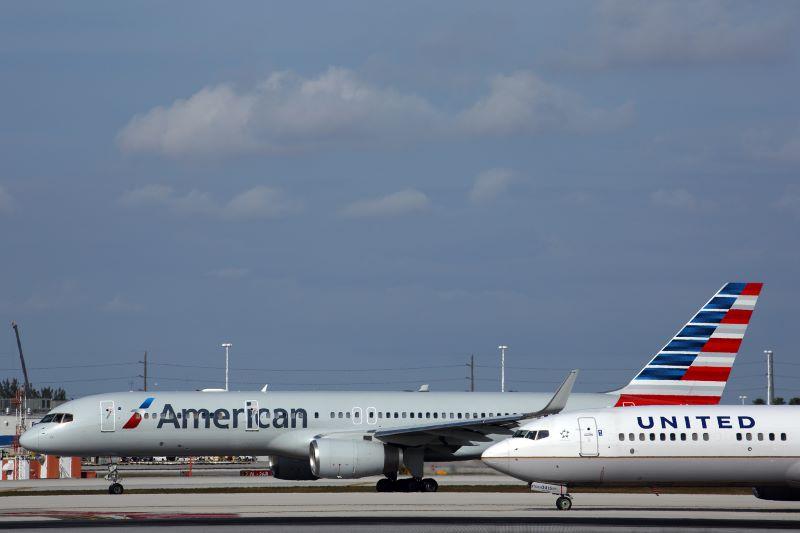
Full-service carriers in the U.S. are targeting domestic schedule cuts greater than 40% on average in November, a report from Bloomberg Intelligence shows.
United Airlines has loaded the largest domestic capacity cuts among U.S. full-service carriers in November—at 50%—compared to 44% at American Airlines and 29% at Delta Air Lines, although the latter has also blocked off middle seats across its entire narrowbody fleet. Including Alaska Airlines—which has cut its November schedule by 43%—full-service carriers are on track to slash domestic capacity by 41% on average in November, a figure that Bloomberg analysts George Ferguson and Francois Duflot expect to rise in coming weeks as carriers cut deeper.
Among hybrid and low-cost carriers, JetBlue Airways and Southwest Airlines are targeting domestic schedule cuts of 38% and 39% in November, respectively, although both carriers are also restricting middle seats across their fleets. Frontier Airlines and Allegiant Air have loaded cuts of 44% and 10%, respectively, while Hawaiian Airlines has cut November capacity by 64%.
Domestic capacity cuts, while deep compared to 2019, still pale in comparison to international cuts, owing to a global patchwork of border closures and mandatory quarantine rules for foreign travelers. United Airlines, for example, will operate just 38% of its prior-year international schedule in November, while American cut its international capacity by 68% in October.
Service cuts by U.S. airlines could be even deeper should federal lawmakers and the Trump Administration fail to agree to another round of payroll support, which blocked carriers from eliminating service to unprofitable markets between April and October. American Airlines, for example, has already announced plans to cease flying to 13 secondary cities beginning Nov. 1, and CEO Doug Parker has warned that more destinations may be dropped should additional aid fail to materialize.
U.S. carriers begin reporting financial results for the 2020 third quarter next week, beginning with Delta and United on Oct. 13 and 14, respectively. Deutsche Bank analyst Michael Linenberg indicated in a report that he expects it to be another bruising quarter, with total revenues contracting by 75% across the industry, harmed by lack of sales in the corporate and long-haul international categories. Linenberg also expects daily cash burn to lower to $125 million in the September quarter, from $175 million in the June quarter.
U.S. Transportation Security Administration daily passenger figures continues to modestly improve, with September throughput down 66.7% year-over-year, compared to April lows of down 95.2%, according to a research note from Cowen & Co. analyst Helane Becker.
While Becker expects demand to “ebb and flow” through the remainder of 2020, she also predicts throughput will reach 1 million per day during the holiday season, compared to a daily average of 2.5 million in 2019. Additionally, she said that domestic leisure demand is already “reasonably back to pre-pandemic levels,” observing that the segment saw approximately 1 million travelers per day in 2019, whereas daily throughput has lately been topping 900,000 on peak-travel days, although off-peak days have been considerably lower.





